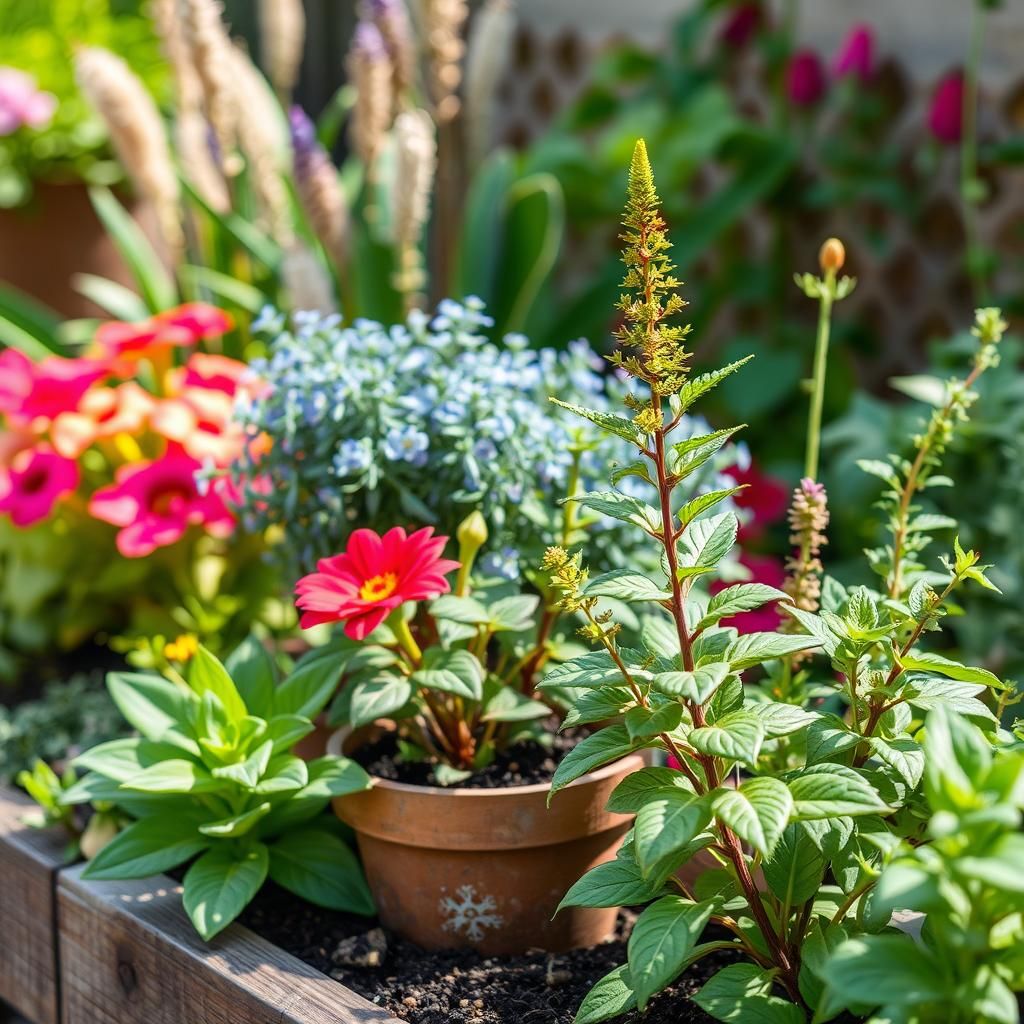Essential Guide: What Not to Plant Next to What? Avoid Costly Gardening Mistakes!

Gardening can be a rewarding and relaxing hobby, but it's not without its challenges. One of the most common pitfalls gardeners face is the mistake of planting incompatible species next to each other. This essential guide will explore the importance of companion planting, featuring a comprehensive overview of what not to plant next to what. By understanding the relationships between different plants, you can avoid costly mistakes that could jeopardize your garden’s health and productivity. Whether you’re a seasoned gardener or a newcomer, this guide will help you make informed decisions and cultivate a thriving garden ecosystem.
What Not to Plant Next to Each Other
When planning a garden, it is crucial to consider plant compatibility, as certain plants can negatively affect the growth and health of their neighbors. For example, tomatoes should not be planted near potatoes due to the increased risk of pest infestations and diseases that affect both species. Similarly, corn can hinder the growth of beans by competing for nutrients and light. Understanding these incompatibilities allows gardeners to create a flourishing environment where plants can thrive, leading to better yields and healthier produce.
Tomatoes and Potatoes
Tomatoes and potatoes belong to the same family, Solanaceae, but planting them together can lead to significant problems. They share pests like the Colorado potato beetle and diseases such as blight, making them prone to rapid infestations. When planted in proximity, the risk of disease transmission is heightened, which can lead to reduced crop yields. To mitigate these risks, it's advisable to plant these crops in different areas of the garden.
Corn and Beans
While corn and beans are often seen together in traditional planting methods, they are not ideal companions in every situation. Corn can overshadow bean plants, depriving them of essential sunlight, which is key for their growth. Additionally, corn requires a lot of nutrients, which can lead to competition for resources. Therefore, planting these two together can stunt the growth of the beans and yield poor results.
Carrots and Dill
Growing carrots alongside dill can lead to difficulties in terms of pests and crop production. Dill can attract pests that specifically target carrot plants, such as the carrot fly. Moreover, when dill is allowed to flower, it can also release certain chemicals that inhibit carrot growth. For optimal results, it's best to plant these two crops in separate areas of the garden.
See also:
Onions and Peas
Onions and peas make for incompatible companions in the garden. Onions release certain chemicals that can hinder the growth of peas, leading to stunted plants and reduced yields. Additionally, the strong flavor of onions can also affect the taste of peas when grown nearby. It’s advisable to maintain some distance between these two vegetables to ensure healthy growth.
Mint and Most Garden Plants
Mint is known for its vigorous growth and can easily overtake other plants in the garden. Its invasive nature makes it a poor choice for close planting with most garden plants. Mint can outcompete nearby crops for nutrients and water, leading to diminished growth and yield. Additionally, its strong aroma can affect the flavors of neighboring plants, making it best to plant mint in a designated area away from other crops.
| Plant A | Plant B | Incompatibility Reason |
|---|---|---|
| Tomatoes | Potatoes | Share pests and diseases |
| Corn | Beans | Competition for light and nutrients |
| Carrots | Dill | Attracts carrot pests |
| Onions | Peas | Inhibits growth |
| Mint | Most plants | Invasive and competes for resources |
Avoiding Common Companionship Pitfalls in Your Garden
When planning your garden, understanding companion planting is essential to avoid making costly mistakes that can lead to poor crop yields or unhealthy plants. Certain plants have been shown to thrive when grown together, while others can hinder growth, attract pests, or even lead to disease susceptibility. By taking the time to educate yourself on which plants are compatible and which are not, you can create a more productive and harmonious garden environment. Always consider the specific needs of each plant, such as light, water, and nutrient requirements, to maximize your gardening success.
Understanding Companion Planting Basics
Companion planting involves pairing different plants in such a way that they benefit each other, leading to improved growth, pest control, and soil health. For instance, planting tomatoes alongside basil can enhance flavor and deter harmful insects. Conversely, certain combinations, like onions near peas, can stifle one another's growth. By grasping the fundamental principles of companion planting, you can design a more effective planting strategy that promotes a healthy garden ecosystem.
Common Planting Mistakes to Avoid
One of the most frequent mistakes gardeners make is ignoring the specific needs of plants. Overcrowding can lead to competition for nutrients, water, and sunlight, which ultimately can hinder growth. Additionally, neglecting to research plant compatibility can result in detrimental combinations, such as cucumbers and potatoes, which may share pests that damage both crops. Understanding and avoiding these common pitfalls is crucial for a thriving garden.
See also:
The Role of Pests in Plant Relationships
Pests can significantly influence the success of your garden by either attacking susceptible plants or being attracted to specific combinations. Some plants naturally repel pests due to their scent or oils, while others might attract unwanted visitors. For example, planting marigolds can help deter aphids. Recognizing which plants serve as pest repellents and which ones may attract infestations is fundamental when planning your garden layout.
Selecting the Right Plants for Your Garden Environment
When choosing plants, consider their growing conditions, such as climate, soil type, and sun exposure. Each plant has unique requirements; for example, lettuce thrives in cooler temperatures, while peppers prefer warmth. By selecting plants that are well-suited to your environment and that can mutually benefit from their presence, you can foster a healthier and more productive garden space.
Using Resources and Tools for Effective Gardening
Utilizing effective tools and resources can empower you to make informed decisions regarding your garden's layout and plant selection. Numerous online databases, gardening books, and community forums offer valuable insights into companion planting and can help you avoid errors. Additionally, garden planners and apps can assist in selecting the best plants based on your specific conditions, ultimately enhancing your gardening experience. By leveraging these resources, you can cultivate a more thriving and sustainable garden.
Questions from Our Readers
What vegetables should not be planted next to each other?
When planning your garden, it's crucial to avoid planting certain vegetables together. For example, tomatoes should not be planted near potatoes as they both can share the same diseases and pests. Additionally, planting beans near onions can stunt their growth due to the chemical interactions between them.
Can certain flowers harm vegetable plants if planted nearby?
Yes, certain flowers can attract pests that harm vegetable plants. For instance, planting marigolds close to your cucumbers can be beneficial, while flowers like nasturtiums should be kept away from broccoli and cabbage due to their ability to attract pests that target these vegetables.
See also:
What herbs should be kept away from each other in a garden?
In herb gardening, it's essential to know which herbs do not get along. For example, basil should not be planted near sage because they have competing growth habits and can inhibit each other's development. Additionally, mint can be quite invasive and should be kept away from other herbs to prevent overcrowding.
Are there any companion plants that can protect each other?
Absolutely, some companion plants can offer mutual benefits. For example, corn and beans can work together where beans provide nitrogen to the soil, benefiting the corn, while the corn offers support for the climbing beans. Additionally, planting garlic near roses can help deter aphids, thereby protecting your plants.

If you want to read more articles like Essential Guide: What Not to Plant Next to What? Avoid Costly Gardening Mistakes!, we recommend you check out our Landscaping category.
Leave a Reply
Related Articles